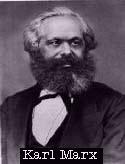Mean: 30.51%
Median: 25%
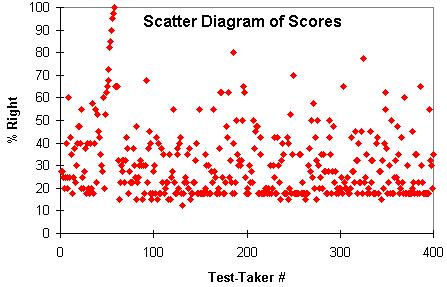

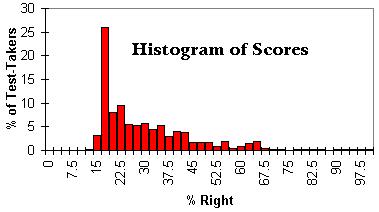
| (26.25) | A. Czarist officials | ||||
| (2.75) | B. Merchants | ||||
| (3) | C. Cossacks | ||||
| (60.75) | D. Peasants
| (5)
| E. Mensheviks
| (2.25)
| F. Orthodox clergy
| |
| (51.5) | A. Volga Germans, Kalmyks, and Chechens
| (1) | B. Greeks, Koreans, and Chechens
| (11.75) | C. Volga Germans, Chechens, and White Russians
| (13) | D. Kalmyks, Crimean Tatars, and Don Cossacks
| (10.75) | E. Crimean Tatars, Ukrainians, and Buryat Mongols
| (12) | F. Volga Germans, Jews, and Koreans
| |
| (24.5) | A. 100,000 | ||
| (1.75) | B. 250,000 | ||
| (2) | C. 400,000 | ||
| (18.75) | D. 1,000,000 | ||
| (44.5) | E. 5,000,000
| (8.5) | F. 30,000,000
| |
| (28.5) | A. The weather conditions in 1920-21 were actually favorable. |
| (5.75) | B. Lenin reversed his agricultural policies once starvation appeared to threaten the survival of the Soviet regime. |
| (0.75) | C. Substantial stockpiles of grain held by the Whites were captured in 1920. |
| (7) | D. Seed grain as well as food for family consumption was requisitioned from peasants as a punitive measure. |
| (28.75) | E. Both A and D, but not C. |
| (29.25) | F. B, C, and D, but not A. |
| (28) | A. 80%. | ||||
| (2.5) | B. 60%. | ||||
| (10.25) | C. 30%. | ||||
| (29.25) | D. 10%.
| (20.5) | E. under 3%.
| (9.5) | F. under 1%.
| |
| (42.5) | A. Deporting "counter-revolutionary" nationalities to Siberia. | ||||||
| (4) | B. Executing other socialists. | ||||||
| (25.25) | C. Ordering the assassination or execution of other high-ranking Communists.
| (8.5) | D. Ordering the secret police to use political prisoners as slave laborers on dangerous construction projects.
| (9) | E. A and C.
| (10.75) | F. B and C.
| |
| (43.5) | A. A wartime expedient, requiring unneeded workers to join the Red Army. |
| (6) | B. Never implemented, but would have required "counter-revolutionaries" to contribute at least 20 hours of labor each week to the war effort. |
| (16.25) | C. Argued to be integral to the very concept of a centrally planned economy. |
| (7.5) | D. Substantially implemented by the war's end, for inflation had almost totally eroded the monetary value of the ruble. |
| (2.25) | E. Explicitly stated to be inconsistent with a workers' right to choose his occupation. |
| (24.5) | F. C, D, and E. |
| (40) | A. Imposing the death penalty for retreat. | ||
| (4.25) | B. Purging the Red Army of former Czarist officers. | ||
| (2) | C. Executing prisoners of war. | ||
| (2.25) | D. Ordering pogroms against Jewish communities to silence complaints that he favored other Jews. | ||
| (19) | E. A and C.
| (32.5) | F. A, B, C, and D.
| |
| (38.5) | A. Only a few thousand village leaders - almost all of the "kulak" fatalities actually occurred during the Ukrainian famine following the dekulakization campaign. |
| (2.5) | B. 100,000 - about as many Japanese who died from the atomic bombs dropped on Hiroshima and Nagasaki. |
| (5.5) | C. 250,000 - about equal to the number of Gypsies exterminated by Hitler. |
| (11.75) | D. 1.5 million - about as many as the Turks killed in the Armenian holocaust. |
| (13) | E. 2 million - about as many as killed by Pol Pot in Cambodia. |
| (28.75) | F. 6.5 million - somewhat more than the number of Jews murdered by Hitler. |
| (41) | A. The grain quotas for the Ukraine and Cossack regions were set abnormally high, even for relatively infertile zones. | ||
| (3.75) | B. Authorities were ordered to move seed grain to secure urban granaries in autumn of 1932. | ||
| (6.75) | C. The Ukraine was internally blockaded, so that food in nearby Russia could not be brought in, and Ukrainian peasants could not go out. | ||
| (2.75) | D. Secret police chief Menzhinsky was executed - and replaced with the anti-Ukrainian Yagoda - after protesting against Stalin's policies towards the Ukraine. | ||
| (19.5) | E. A, B, and C.
| (26.25) | F. A, B, C, and D.
| |
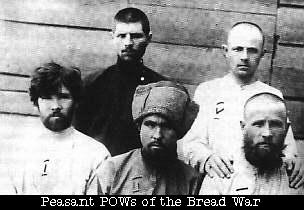
| (50.5) | A. was deadly because it forced migratory nomads to abandon their traditional way of life, without adequately preparing them to do anything else.
| (5.5) | B. concentrated on crushing the Islamic faith.
| (2.75) | C. was a response to perceived pro-German sentiment among Kazakhs.
| (10) | D. was, like the Ukrainian famine, deliberately inflicted.
| (1) | E. provoked only token violent resistance.
| (30.25) | F. A, D, and E.
| |
| (44) | A. 115. | ||||
| (1.75) | B. About 300. | ||||
| (4.75) | C. About 500. | ||||
| (15.25) | D. 1108.
| (27.5) | E. All but 115.
| (6.75) | F. All of them.
| |
| (54.25) | A. Poland and Germany. | ||||||
| (9) | B. Germany, Italy, and Japan. | ||||||
| (6.75) | C. Poland and Korea.
| (13) | D. The Baltic nations, Finland, and Romania.
| (7.5) | E. Poland, Germany, and Spain.
| (9.5) | F. Yugoslavia, Bulgaria, and Greece.
| |
| (46.25) | A. Stabilized, with the incoming waves of deported kulaks approximately equaling the annual attrition rate. | ||||||||
| (11) | B. Stabilized at around 10,000,000 in 1940, after over 1 million Poles were sentenced to the camps.
| (2.75) | C. Did not increase significantly until the Great Terror, when the camp population doubled in size.
| (3.25) | D. Grew sharply as a result of delukization, then slowly declined in spite of the Great Terror.
| (20) | E. Never stabilized - reaching 20,000,000 by the end of World War II, and 25,000,000 by Stalin's death.
| (16.75) | F. Declined to 1 million during World War II - as prisoners were given amnesties if they joined the Red Army - only to peak again at 3 million in 1948.
| |
| (86.75) | A. The deadliest of the slave labor camps in Siberia, where over 2 million perished.
| (1.5) | B. The treatment received by purged Party members, totally ostracized by their former friends and family.
| (7) | C. The canal built between the Baltic and the White Seas, constructed by slave laborers under conditions of extreme hardship.
| (3.75) | D. The NKVD's solitary confinement cells in Moscow, which were completely unheated.
| (0.5) | E. Stalin, by one of his revolutionary aliases.
| (0.5) | F. Stalin's first wife, noted for her icy personality.
| |
| (66.5) | A. Stalin exterminated over 3 times as many Poles as Hitler did, even though the eastern zone held only half the population of the western zone.
| (2) | B. Millions of Poles fled to the Soviet zone to escape even worse conditions inflicted by the Nazis.
| (4) | C. Approximately equal numbers of Poles died in both zones, although the Nazi kill ratio was greater.
| (16) | D. Tens of thousands of Polish intellectuals, officers, and other community leaders were executed by a special unified task force of the German and Russian secret police.
| (6.25) | E. B and C.
| (5.25) | F. A, B, and C.
| |
| (72.5) | A. The Soviet sphere initially included eastern Poland, all three Baltic states, Finland, and part of Romania. |
| (3.25) | B. Germany "swapped" Lithuania for part of Poland. |
| (1.25) | C. Hitler and Stalin exchanged political prisoners to secure release of jailed comrades. |
| (2) | D. Stalin had annexed Finland by 1941. |
| (2.75) | E. 2-4% of the population of the Baltic states was deported to Siberia. |
| (18.25) | F. B and E. |
| (53) | A. Showed that Stalin's Great Terror had successfully eliminated most potential collaborators. | ||||
| (6.5) | B. Convinced Stalin to immediately purge the Red Army, including the famed Marshall Tukhachevsky. | ||||
| (2.25) | C. Convinced Stalin to temporarily dissolve the collective farms and internal passport system. | ||||
| (11.5) | D. Sparked guerrilla uprisings amongst Ukrainians and Chechens.
| (20.25) | E. Now appears to have been a pre-emptive strike against a planned Soviet invasion of the German Reich.
| (6.5) | F. Was encouraged by the ability of the Baltic states to fight the Red Army to a standstill for almost four months.
| |
| (48.25) | A. Large numbers of Japanese POWs. |
| (7) | B. Ethnic Germans, both POWs and civilians. |
| (8.5) | C. Millions of Soviet POWs. |
| (0.75) | D. Over half the population of Georgia and Armenia. |
| (1.75) | E. About 10% of the population of the Ukraine. |
| (33.75) | F. B and C. |
| (61.25) | A. Over 10 million ethnic Germans were expelled from eastern Europe, and about 2 million perished.
| (2) | B. After the Red Army had passed through eastern Europe, there were few ethnic Germans remaining to expel.
| (5.25) | C. About 2 million ethnic Germans were expelled by the Communist-dominated governments of Poland and Czechoslovakia.
| (7.5) | D. Over half of the "expelles" were deported east to Siberia, not west to Germany.
| (2.25) | E. The United States and Britain typically ordered German refugees to return to their country of origin.
| (21.75) | F. C and D.
| |
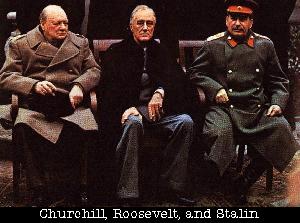
| (50.75) | A. Soviet troops seized much of the industry of Manchuria. | ||
| (3.5) | B. Stalin refused to recognize the Nationalist government of Chiang Kai Shek. | ||
| (6.5) | C. Large numbers of landlords and "counter-revolutionaries" were executed in territory controlled by the Chinese Communist Party. | ||
| (2) | D. Mao's forces conquered Tibet and sent over 1 million Tibetans to slave labor camps. | ||
| (23) | E. A and C.
| (14.25) | F. A, B, and D.
| |
| (61.5) | A. Dzerzhinski and Trotsky. |
| (6) | B. Yagoda and Tukhachevsky. |
| (5) | C. Kamenev and Zinoviev. |
| (6) | D. Kirov and Bukharin. |
| (3.5) | E. Kirov and Yagoda. |
| (18) | F. Yagoda and Yezhov. |
| (54.5) | A. Stalin tried to veto Mao's effort to form a coalition government with Chiang's forces. | ||
| (0.5) | B. Soviet troops occupied Tibet during the 1930's. | ||
| (2.75) | C. Mao disapproved of the show trials of Zinoviev and Kamenev. | ||
| (3) | D. Stalin vetoed a joint Soviet-Chinese invasion of Japan. | ||
| (18.75) | E. Stalin doubted Mao's chances for success, and therefore gave him little assistance.
| (20.5) | F. All of the above.
| |
| (55.75) | A. Permitted joint membership in the Chinese Communist Party. |
| (7) | B. Accepted several prominent Soviet advisors. |
| (3.5) | C. Sent Chiang to Moscow to work out a deal for military aid. |
| (2.5) | D. Had its army's officer corp trained by Soviet experts on Whampoa Island. |
| (1.25) | E. Appointed Mao Zedong as second in command of its Propaganda Ministry. |
| (30) | F. All of the above. |
| (53.5) | A. Economic advisors. | ||
| (2) | B. Assistance in setting up a "Chinese Gulag." | ||
| (3) | C. Large grants and no-interest loans for purchase of technical equipment. | ||
| (2) | D. Nuclear weapons. | ||
| (29.25) | E. A and B.
| (10.25) | F. A, C, and D.
| |
| (54.5) | A. Had an annual death rate in excess of Stalin's Gulag. | ||||||||
| (8.25) | B. Had over 10,000,000 inmates.
| (2) | C. Had little economic function.
| (1.5) | D. Consisted mainly of Chinese POWs from the Korean War.
| (30.25) | E. A and B.
| (3.5) | F. C and D.
| |
| (57) | A. Land Reform, the Great Leap Forward, and the Sufan Purge. | ||||||
| (2.5) | B. The Resist-US-Aid-Korea campaign, the Great Leap Forward, and the Let a Hundred Flowers Bloom campaign. | ||||||
| (10.75) | C. Land Reform, "suppression of counter-revolutionaries," and Resist-US-Aid-Korea.
| (1.75) | D. Collectivization, the Great Leap Forward, and the Gang of Four trial.
| (19.25) | E. Collectivization, the Great Leap Forward, and the Cultural Revolution.
| (8.75) | F. Land Reform, the Great Leap Forward, and the Let a Hundred Flowers Bloom campaign.
| |
| (51.75) | A. Land Reform. | ||||||
| (6.75) | B. Farm collectivization. | ||||||
| (19.5) | C. The Great Leap Forward.
| (20.5) | D. The Cultural Revolution.
| (1.25) | E. The Lin Biao purge.
| (0.25) | F. The Gang of Four trial.
| |
| (54) | A. Took back the land given to the peasants in the Land Reform campaign. | ||
| (4.25) | B. Collectivized agricultural and purged millions of "kulaks," or wealthy peasants. | ||
| (3.75) | C. Consolidated collective farms, and introduced common barracks and kitchens. | ||
| (4) | D. Required villages to set up makeshift steel mills fed with scrap metal. | ||
| (10.5) | E. C and D.
| (23.5) | F. A, B, C, and D.
| |
| (52.75) | A. Move to the city. |
| (0) | B. Choose their occupation. |
| (1.25) | C. Demand payment for their work for the commune. |
| (1) | D. Keep the house they occupied. |
| (2) | E. Keep their own tools. |
| (43) | F. None of the above. |
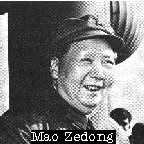
| (51.25) | A. Trotskyists. | ||||
| (0.75) | B. Stalinists. | ||||
| (7.75) | C. Nationalists. | ||||
| (30.75) | D. Revisionists.
| (3.5) | E. Dengists.
| (6) | F. Emperor-worshippers.
| |
| (87.25) | A. Strongly and increasingly negative, leading him to announce that the Soviet Union was ruled by revisionists who had restored capitalism.
| (4.75) | B. Mixed, since the Chinese Communists had been treated so poorly by Stalin.
| (2.5) | C. Mixed, because Khrushchev was able to win China the diplomatic recognition of the United States.
| (2) | D. Generally positive, though he defended Stalin's memory to win the support of the Indonesian Communist Party and the Khmer Rouge.
| (1) | E. Positive, although he opposed the relaxation of censorship.
| (2.5) | F. Unconditionally supportive, for Mao like most of the Chinese Communist Party was used to sudden reversals in the Party line.
| |
| (51.25) | A. Mao seems to have struggled to prevent it. | ||
| (10.5) | B. It targeted intellectuals who later denounced the Cultural Revolution in their work. | ||
| (3.25) | C. Some of its victims ultimately regained power. | ||
| (0.5) | D. It provoked border clashes with India. | ||
| (31) | E. B and C.
| (3.5) | F. A, B, and D.
| |
| (71.75) | A. The post-war expulsions of ethnic Germans from Poland, Czechoslovakia, and other countries.
| (6.5) | B. Deportation of Poles to Siberia.
| (9.25) | C. The 1956 invasion of Hungary and subsequent deportations.
| (1.75) | D. The 1968 invasion of Czechoslovakia.
| (5.5) | E. Tito's "anti-Comintern" persecutions.
| (5.25) | F. Executions of persons attempting to escape from East Germany.
| |
| (57.25) | A. Tito. | ||||||
| (3.75) | B. Kim Il-sung. | ||||||
| (12) | C. Pol Pot.
| (0.75) | D. Ho Chi Minh.
| (11.5) | E. A and C.
| (14.75) | F. C and D.
| |
| (52.75) | A. Was unable to maintain its hold on power without the continuing presence of Soviet occupation troops. | ||||||
| (0.75) | B. Tried to moderate the abuses of Stalin's "personality cult." | ||||||
| (5) | C. At one point "rented" slave laborers to the Soviets for use in Siberia.
| (4) | D. Officially registered about 50% of the population as a "hostile class."
| (7.75) | E. A and C.
| (29.75) | F. C and D.
| |
| (54) | A. Worked as a Comintern agent in China during the 1920's. | ||
| (0.75) | B. Waited until French withdrawal to execute nationalists and purge the Communist Party of "Trotskyists." | ||
| (3.25) | C. Killed several hundred thousand Vietnamese landlords and their families during the 1950's. | ||
| (4) | D. Set up "re-education camps" and "special economic zones" in 1975 to punish his opponents in South Vietnam. | ||
| (10.75) | E. A and C.
| (27.25) | F. A, B, C, and D.
| |
| (62.25) | A. Over 95% were Vietnamese. | ||||||||
| (6.25) | B. Many were "boat people," or refugees who were forced to flee Vietnam on unseaworthy boats to avoid execution or slave labor camps.
| (1.5) | C. Few were killed in "re-education camps," which were atypically mild for a Communist regime.
| (1.25) | D. Almost all were exterminated during wartime.
| (18.75) | E. A and B.
| (10) | F. A, B, and D.
| |
| (54.5) | A. Forcing the entire urban population into forced agricultural collectives, where they worked under conditions of extreme hardship. | ||
| (1) | B. Exterminating ethnic Chinese, Vietnamese, and other minorities. | ||
| (0.5) | C. Executing Cambodians unable to speak French. | ||
| (0.75) | D. Imposing Buddhism on Cambodia's Catholic and Muslim minorities. | ||
| (35.75) | E. A and B.
| (7.5) | F. A, B, and D.
| |
| (52) | A. Was a moderate socialist who ended large-scale killing in Cambodia. |
| (11.5) | B. Worked closely with Vietnamese forces as they murdered several hundred thousand additional Cambodians. |
| (2) | C. Largely abolished Cambodia's slave labor camps. |
| (3.25) | D. Had about 5% the annual murder rate of Pol Pot's regime. |
| (6) | E. A, B, and C. |
| (25.25) | F. B and D. |
